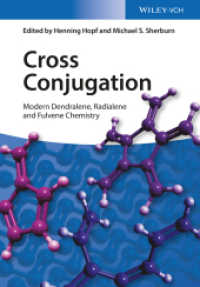- ホーム
- > 洋書
- > ドイツ書
- > Mathematics, Sciences & Technology
- > Earth Science
Full Description
This book covers the fundamentals, limitations, and challenges of phytoremediation in contaminated water, air, and soil due to rapid demographic and industrial development.








